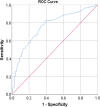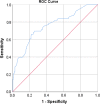Domestic violence experienced by women with multiple sclerosis: a study from the North-East of Iran
- PMID: 35909119
- PMCID: PMC9339184
- DOI: 10.1186/s12905-022-01905-9
Domestic violence experienced by women with multiple sclerosis: a study from the North-East of Iran
Abstract
Introduction: Violence against women is a significant health and legal problem and has been declared as a health priority by the World Health Organization. The most common type of violence against women is domestic violence, more prevalent against women with disabilities than other women. Multiple sclerosis (MS) is a debilitating neurological disease and has experienced sudden growth in Iran. This study aimed to investigate the prevalence of domestic violence and its various types (psychological, economic, physical, and sexual) experienced by women with MS.
Methods: In this cross-sectional study, 275 married women with MS were selected using convenience sampling. After obtaining informed consent and reviewing the inclusion and exclusion criteria, the Domestic Violence against Women Questionnaire developed by Mohseni Tabrizi et al. was completed by the participants on a self-report basis. The results were analyzed using SPSS software version 16. To analyze data, statistical tests including chi-square and Fisher exact tests for univariate analysis and logistic regression, were employed.
Results: The mean age of participants was 37.12 ± 8.48 years. Domestic violence in different forms of psychological, economic, physical, and sexual violence was present in 53.1%, 63%, 33.6%, and 20.4% of participants, respectively. Economic violence (33.8%) was the highest, and sexual violence (5.1%) was the lowest rate of severe violence among participants. There was a significant relationship between the overall rate of domestic violence and the variables including income (P = 0.013), spouse's income (P = 0.001), participant's job (P = 0.036) and participant's education (P = 0.001). In logistic regression, the overall rate of domestic violence was higher in participants with education less than a diploma than in participants with a diploma (P = 0.014) and participants with a university education (P = 0.016).
Conclusion: According to the results, providing opportunities such as promoting the social status of women, fulfilling the rights of women with disabilities and debilitating diseases such as MS in society is recommended. Additionally, educating men about the negative impact of domestic violence on the current and future status of the family seems necessary. Providing counseling facilities on various forms of violence, especially domestic violence, for women with MS, is also recommended.
Keywords: Domestic violence; Economic violence; Iran; Multiple sclerosis; Physical violence; Psychological violence; Sexual violence.
© 2022. The Author(s).
Conflict of interest statement
The authors declare that they have no competing interests.
Figures
Similar articles
-
Factors affecting domestic violence against women in Iran: a scoping review.BMC Womens Health. 2025 May 15;25(1):231. doi: 10.1186/s12905-025-03770-8. BMC Womens Health. 2025. PMID: 40375210 Free PMC article.
-
COVID-19 pandemic and the prevalence of domestic violence against Iranian married women.Neuropsychopharmacol Rep. 2024 Mar;44(1):51-59. doi: 10.1002/npr2.12375. Epub 2023 Sep 20. Neuropsychopharmacol Rep. 2024. PMID: 37731301 Free PMC article.
-
Domestic violence and its predictors among married women in reproductive age in Fagitalekoma Woreda, Awi zone, Amhara regional state, North Western Ethiopia.Reprod Health. 2013 Dec 5;10:63. doi: 10.1186/1742-4755-10-63. Reprod Health. 2013. PMID: 24308763 Free PMC article.
-
Domestic violence against women in Shiraz, South-western Iran.J Inj Violence Res. 2019 Jul;11(2):243-254. doi: 10.5249/jivr.v11i2.1238. Epub 2019 Jul 8. J Inj Violence Res. 2019. PMID: 31281173 Free PMC article.
-
Domestic Violence Among Iranian Women: A Systematic Review and Meta-Analysis.Iran Red Crescent Med J. 2016 May 17;18(6):e34971. doi: 10.5812/ircmj.34971. eCollection 2016 Jun. Iran Red Crescent Med J. 2016. PMID: 27621936 Free PMC article. Review.
Cited by
-
Paradigm shift required for translational research on the brain.Exp Mol Med. 2024 May;56(5):1043-1054. doi: 10.1038/s12276-024-01218-x. Epub 2024 May 1. Exp Mol Med. 2024. PMID: 38689090 Free PMC article. Review.
-
A qualitative quantitative mixed methods study of domestic violence against women.BMC Womens Health. 2023 Jun 20;23(1):322. doi: 10.1186/s12905-023-02483-0. BMC Womens Health. 2023. PMID: 37340321 Free PMC article.
-
Factors affecting domestic violence against women in Iran: a scoping review.BMC Womens Health. 2025 May 15;25(1):231. doi: 10.1186/s12905-025-03770-8. BMC Womens Health. 2025. PMID: 40375210 Free PMC article.
-
Intimate partner violence and multiple sclerosis.Mult Scler. 2024 Mar;30(3):295-298. doi: 10.1177/13524585231197926. Epub 2023 Sep 21. Mult Scler. 2024. PMID: 37732567 Free PMC article.
References
-
- Iran. UNIR. Types of violence against women and girls. 2020 https://iran.un.org/en/102394-frequently-asked-questions-types-violence-....
-
- WHO. Violence against women Prevalence Estimates, 2018. Global, regional and national prevalence estimates for intimate partner violence against women and global and regional prevalence estimates for non-partner sexual violence against women. : Geneva.2021.
-
- Ansari HNM, Yadegari M, Javaheri M, Ansari S. Evaluation of physical, psychological and sexual violence and related factors among married women in Zahedan. Medi J Hormozgan. 2011;16(6):491–499.
-
- Equality. EIfG. Physical violence. https://eige.europa.eu/taxonomy/term/13182021.
Publication types
MeSH terms
LinkOut - more resources
Full Text Sources
Medical






